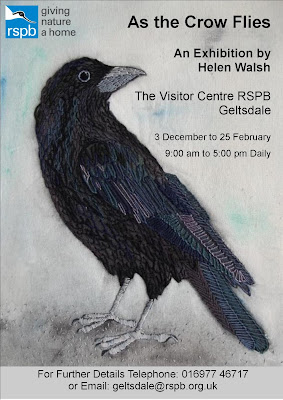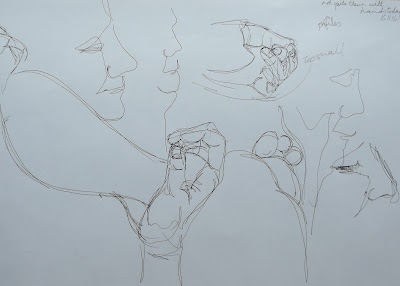 |
| Winter blossom in my garden |
I started this blog as a way to record all the different projects and things I'm involved in and all the different things I make and do. Over time it has changed and developed, as I have, and has been used for different purposes. Purposes such as recording, documenting, sharing and venting. I've hardly blogged at all over the last few months, not so much because I've been too busy (I'm always busy!) but because I'd lost sight a little of the point of this blog. Whilst sharing is one of it's purposes it's not the main reason I keep it going, it's main point is to give me a place to write openly about my work and therefore myself.
 |
| Spinning: I've now been spinning just over a year |
 |
| Spinning |
 |
| Hand spun |
I've worked on some challenging projects this year and there are a lot of projects I haven't written up for various reasons, including that some of them have been very difficult and I've struggled to take the positives from them. This has led to me having a backlog of draft posts and the feeling that I shouldn't write anything new until I'd written up the older stuff. However, as it's the time of year for reassessment and new beginnings I took some time to think about my blog. Why did I need to write up those projects? What would happen if I did? What would happen if I didn't? Of course the answer is that my blog posts are only really important to me, it's great if other people read them and take something from them but ultimately the contents of this blog are mine and so it's up to me to decide what I want to put out there. Posting or not posting about a project or piece of work does not make it any more or less valid or important.
 |
| Walking and collecting natural materials has been a key inspiration this year |
 |
| Wintry Gelt Woods |
 |
| There's always green somewhere |
This train of thought led to me deciding to delete all my draft posts, write this post and start afresh. If anyone is interested; almost all my projects are documented in visual form over on my Flickr account so you could head over there if you really want to know what I've been up to!
 |
| Knitting my hand spun yarn |
2016 has been a tumultuous year in many ways for many people, I think we've all been forced to sit up and take note and maybe reassess some quite important beliefs. On a personal and professional level I've had a good year and I've learnt a lot. I've had some great opportunities this year and I feel that I've really taken a step forward.
 |
| I'm lucky to live in such a beautiful place |
One of my biggest highlights is having my exhibition at RSPB Geltsdale, this has been so positive for me on many levels and I'm hoping to build on this in the coming year. It's given me an opportunity to focus on my personal practice and build a body of work and seeing it all up and on display has been a huge confidence boost. I've also received some really lovely feedback which has helped inspire me to push forward.
 |
| Exhibition Poster |
I have two main aims for 2017, they are sort of resolutions but more a shift in thinking and acting. Firstly I aim to prioritise creativity; it is, I believe, an essential thing for all of us to express our creativity but too often it gets put to the bottom of the to do list. My whole life is built around my creativity yet still I get sucked into bad habits and neglect to make time to experiment and explore.
 |
| Jay, 2016 |
Secondly I am aiming to live a more 'local' life and be a positive part of my community. Political events this year have led to me wanting to withdraw and back away and I have lost a lot of what faith I did have in 'the system.' My answer is to do what I can in my life; I can't change the world on my own and I'm not big enough or brave enough to tackle the system but what I can do is be kind, considerate and careful of the people and the environment I live in.
Thank you for reading and I wish you all a very happy and peaceful New Year!






















































